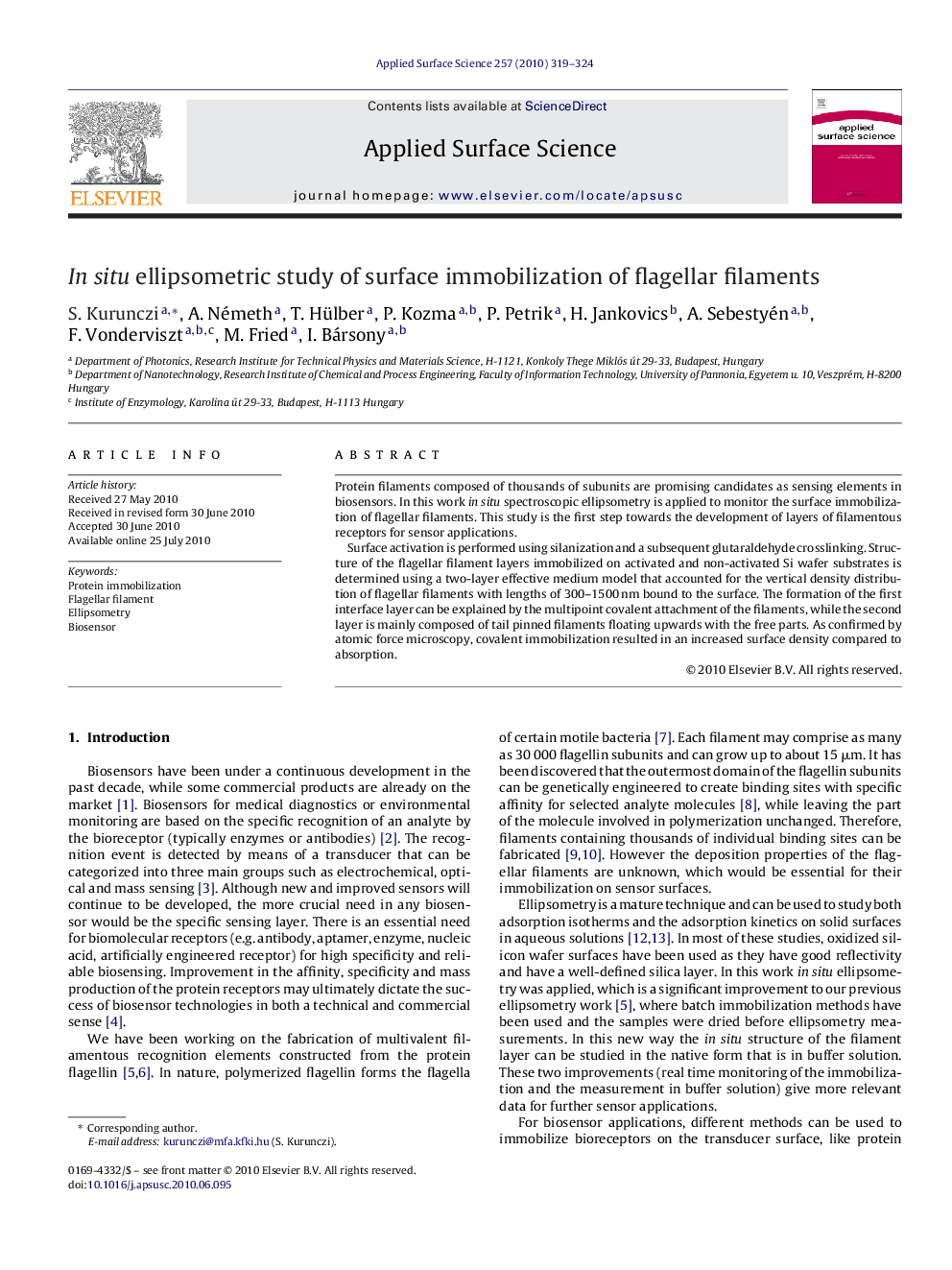| Article ID | Journal | Published Year | Pages | File Type |
|---|---|---|---|---|
| 5365208 | Applied Surface Science | 2010 | 6 Pages |
Protein filaments composed of thousands of subunits are promising candidates as sensing elements in biosensors. In this work in situ spectroscopic ellipsometry is applied to monitor the surface immobilization of flagellar filaments. This study is the first step towards the development of layers of filamentous receptors for sensor applications.Surface activation is performed using silanization and a subsequent glutaraldehyde crosslinking. Structure of the flagellar filament layers immobilized on activated and non-activated Si wafer substrates is determined using a two-layer effective medium model that accounted for the vertical density distribution of flagellar filaments with lengths of 300-1500Â nm bound to the surface. The formation of the first interface layer can be explained by the multipoint covalent attachment of the filaments, while the second layer is mainly composed of tail pinned filaments floating upwards with the free parts. As confirmed by atomic force microscopy, covalent immobilization resulted in an increased surface density compared to absorption.
